

All of the surviving documents relating to “Maestro Giovanni di Bonino di Assisi” relate to work carried out in the Duomo of Orvieto:
-
✴the Opera del Duomo paid him for six days’ work "ad faciendum fenestra vetri" (for work on [unspecified] glass windows) in 1325.
-
✴he received received two payments for the execution of the stained glass window in the tribune (see below) in 1334 ; and
-
✴he was called back to Orvieto from Perugia in 1345 to work on the mosaic of the facade.
A stained glass window from Sant’ Agostino, Perugia (see below) is attributed to him, as are some of the 14th century windows in San Francesco in his native Assisi (see also below).
Assisi
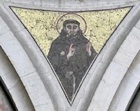
Stained Glass in the Lower Church of San Francesco
The stained glass in the following chapels in the Lower Church of San Francesco is attributed to Giovanni di Bonino:
Cappella di Sant’ Antonio da Padova (ca. 1316)
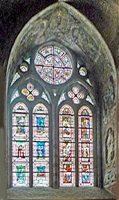
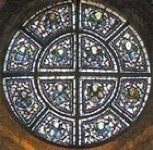
The rose in the window of the Cappella di Sant’ Antonio da Padova, which is attributed to Giovanni di Bonino, contains busts of Franciscan saints. These include St Louis of Toulouse, who appears at the top left of the inner circle. A number of features of his depiction help to date the work:
-
✴he is dressed as a bishop, so it must post-date his episcopal consecration in December, 1296; and
-
✴he is identified simply as “F. Lodovic[us]” (Brother Louis) and depicted without a halo, which suggests that it was commissioned before his canonisation in 1317.
Cappella di San Ludovico (ca. 1317)

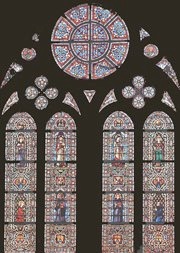
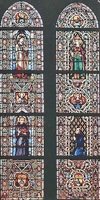
The windows of the Cappella di San Ludovico (the burial chapel of Cardinal Gentile Partino da Montefiore) are attributed to Giovanni di Bonino. The rose contains geometric designs, and the four lights below depict:
-
✴in the top register of all four, the symbols of the Evangelists;
-
✴in the panes below, on the left:
-
•St Louis of Toulouse dressed as Bishop of Toulouse, receiving the blessing of Christ ; and
-
•St Louis of Toulouse dressed as a layman, kneeling before St Francis;
-
✴in the panes below, on the right:
-
•the Virgin and St Louis IX of France; and
-
•Cardinal Gentile (identified as “D[ominus] Gentili[s]”) kneeling before St Antony of Padua; and
-
✴in the bottom register of all four, the arms of Cardinal Gentile.
The presence of a halo in the two depictions of St Louis of Toulouse suggest that the glass was designed in anticipation of his imminent canonisation, which occurred in 1317. The work was probably an Angevin commission, and it is entirely possible that the family worked closely with the (unknown) executors of Cardinal Gentile.
Cappella di Santa Caterina (ca. 1325)
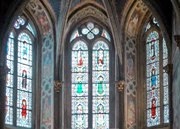
The central bifore in the window of the Cappella di Santa Caterina is attributed to Giovanni di Bonino and believed to pre-date his work at Orvieto (see below). The glass in the other two bifores is of lower quality, but probably dates to the same period. The scenes depict standing saints: St Catherine, the titular of the chapel, appears with the Madonna and Child in the top register.
Cappella di San Martino
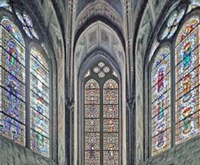
The stained glass in the windows of the Cappella di San Martino is attributed to Giovanni di Bonino, in association with Simone Martini (who executed the frescoes of the chapel). The main fields depict single figures, identified by inscription as (from the top in each case):
-
✴on the left:
-
•SS Gregory and Martin of Tours;
-
•SS Francis and Nicholas of Bari; and
-
•SS Rufinus and Stephen;
-
✴in the centre:
-
•Christ and the Virgin;
-
•SS Martin of Tours and Peter; and
-
•Cardinal Gentile Partino da Montefiore (who commissioned the decoration of the chapel) kneeling before St Martin (Pope Martin I);
-
✴on the right:
-
•SS Jerome and Paul;
-
•SS Damian and Martin of Tours; and
-
•SS Antony of Padua and Laurence.
Orvieto
Stained Glass (1334)

Perugia
Stained glass (ca. 1345)
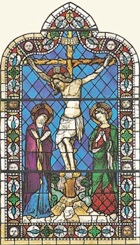
The original window has been attributed to Giovanni di Bonino on the basis of a comparison with the corresponding scene in the window at Orvieto (above), albeit that the iconography is different in the two works. (The cross in Orvieto is “Y” shaped). The Perugian window is usually dated to ca. 1345 because Giovanni di Bonino was called to Orvieto from Perugia in that year. However, some scholars believe that it predates the window in Orvieto.





